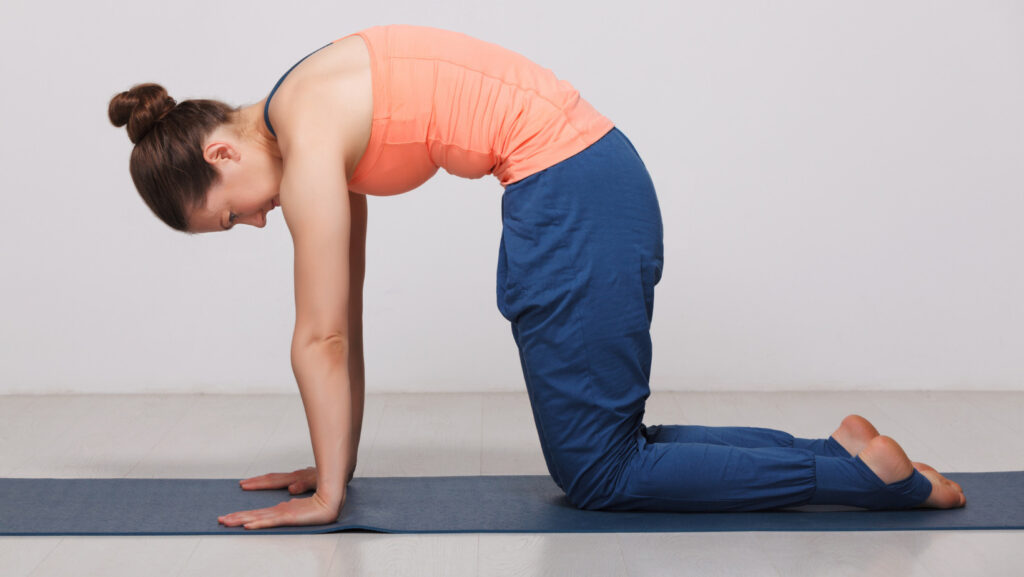
Gentle Yoga Practice: A 30-Minute Floor Sequence
In modern life, things can feel fast-paced and uncertain, often overstimulating both the mind and nervous system. As a result, it’s easy to become dysregulated physically and mentally. However, even during overwhelming moments, carving out time for self-care is essential.
Fortunately, grounding in a gentle yoga practice is an effective way to calm the nervous system. Below is a simple 30-minute floor sequence designed to restore balance and ease tension.
Props You Will Need
Before you begin, gather a few simple props to support your practice.
- Yoga mat
- Yoga strap
- 1 block
- Bolster
If you don’t have traditional props, substitute pillows or rolled-up blankets for a bolster, or sturdy books for blocks. This way, the sequence stays accessible in any environment.
Step 1: Constructive Rest Pose
Begin lying on your back in constructive rest pose:
-
Bring the soles of your feet mat-width apart and allow the knees to fall toward each other.
-
Notice the natural curves of your spine and its relationship to the floor.
-
Pay attention to how your body expands and relaxes with each inhalation and exhalation.
This pose creates a foundation for mindful movement throughout the sequence.
Step 2: Dvipada Pitham – Bridge Pose
From constructive rest pose:
-
Lift your knees and slide your ankles under your knees (heels don’t need to touch glutes).
-
Place your block between your knees for gentle support.
-
Keep your arms parallel to your torso, palms facing down.
-
Inhale and gently lift the hips, rolling the spine off the floor one vertebra at a time.
-
Exhale, slowly lower the spine back.
Repeat 4 rounds, then remain in bridge pose for 4 breaths. Gently squeeze the block while pressing heels into the mat. Afterwards, release back down and rest in constructive rest pose.
Step 3: Ardha Apanasana – Half Downward Flowing Energy Pose
-
On an exhale, draw your right knee into your chest and hold it with both hands.
-
Inhale, allow the knee to move slightly away while maintaining a gentle hold.
-
Exhale, bring it back toward the chest.
Continue 4 rounds, noticing the gentle movement of your lumbar spine and hip mobility.
Step 4: Supta Padangusthasana – Reclined Hand-to-Big-Toe Pose
Variation 1:
-
Hold the back of your right knee and inhale as the leg moves away from the chest, pressing the heel toward the ceiling.
-
Exhale, bend the knee back in. Repeat 4 rounds, observing sensations along the back of the leg.
Variation 2:
-
Use a strap along the ball of the foot, holding both ends.
-
Inhale, straighten the leg, pressing the heel upward.
-
Exhale, draw the leg toward the chest. Repeat 4 rounds, then remain for 6 breaths, ensuring sensations are evenly distributed.
-
Release the leg and repeat on the other side.
Step 5: Bhujangasana – Cobra Pose
-
Turn onto your front, placing hands in line with shoulders.
-
Exhale, connect through the pubic bone and tops of the feet.
-
Inhale, lift head and chest slightly without using your arms; exhale to lower. Repeat 4 rounds.
-
Remain in the posture for 6 breaths, pressing lightly into the hands and reaching through the crown of the head.
Step 6: Apanasana – Downward Flowing Energy Pose
-
Roll onto your back and bend your knees, placing feet on the floor.
-
On exhale, draw both knees into the chest, holding the kneecaps.
-
Inhale, allow knees to move away; exhale, draw them closer. Repeat 4–6 rounds, noticing differences between sides.
Step 7: Savasana – Final Relaxation
-
Lay on your back, bolster under knees, legs extended.
-
Feel your body soften against the floor.
-
Observe your breath and allow your mind to grow calm and still.
This final pose supports complete integration of your practice.
Tips for Practicing Gentle Yoga
You can practice this sequence anytime — to start your day calmly or to unwind in the evening. Additionally, modify props as needed for your comfort. Above all, meet yourself where you are, honoring both your body and breath.
